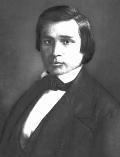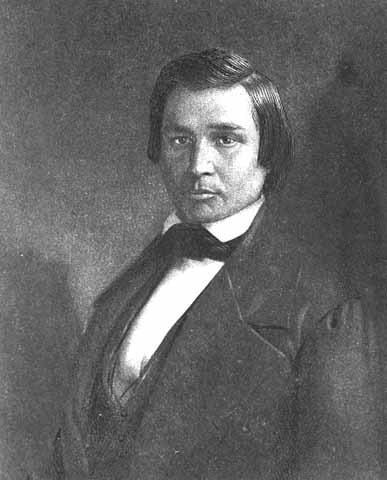Name George Copway | Role Writer | |
 | ||
Died January 1869, Oka, Quebec, Canada Books The traditional history an, The Life - History - And Trav, Indian life and Indian history by, The life - letters and speeches, Organization of a New Indian Te | ||
George Copway (1818 – January 1869) was a Mississaugas Ojibwa writer, ethnographer, Methodist missionary, lecturer, and advocate of Native Americans. His Ojibwa name was Kah-Ge-Ga-Gah-Bowh (Gaagigegaabaw in the Fiero orthography), meaning "He Who Stands Forever". In 1847 he published a memoir about his life and time as a missionary. This work made him Canada's first literary celebrity in the United States. In 1851 he published The Traditional History and Characteristic Sketches of The Ojibway Nation, the first published history of the Ojibwa in English.

Biography
Copway was born near Trenton, Ontario, into a traditional Ojibwa family; his father John Copway was a Mississaugas chief and medicine man. His parents converted to Methodism in 1827. Beginning in the 1830s, the young Copway attended the local mission school.
In July 1834, together with an uncle and cousin, he was invited to work with a Methodist minister as a missionary to Ojibwe who lived near the western part of Lake Superior. His activities in two different areas over the next few years included working with Reverend Sherman Hall in La Pointe, Wisconsin to translate the Christian Acts of the Apostles and the Gospel of St Luke into Ojibwa. In 1838 the Methodists provided for Copway's education in Illinois, and later ordained him as a minister.
In 1840, Copway met Elizabeth Howell, an English woman whose family were farmers in the Toronto area. They married and moved to Minnesota to serve as missionaries. They had a son, George Albert Copway (1843 – 1873) and a daughter Frances Minnehaha (Copway) Passmore (1863 - 1921) during their marriage.
The couple later returned to Canada in 1842, where Copway served as a missionary for the Saugeen and Rice Lake Bands of the Ojibwa. He was elected vice-president of the Ojibwe General Council. In 1846, he was accused and convicted of embezzlement by the Indian Department. Because of this, he was defrocked by the Methodists.
The Copways moved to New York City, where he wrote and published a memoir, The Life, History and Travels of Kah-ge-ga-gah-Bowh (1847). It was the first book published by a Canadian First Nations person. It had six printings in the first year and rapidly became a bestseller.
During the 1840s, he toured and lectured in the United States and also traveled to Europe. That travel provided him with the material for his book of sketches of Europe, published in 1851 after his book on the history of the Ojibwe. During this period, Copway acted as an advocate for a Native American territory, suggesting a 150-square mile territory be established in what was the American Midwest east of the Missouri River. The tribes in the area were under increasing pressure of encroachment by European-American settlers. This proposal was never approved by the United States Congress, but Copway attracted considerable attention from leading intellectuals of the time, including the historian Francis Parkman.
In 1851, Copway started his own weekly newspaper in New York City, titled Copway's American Indian, which ran for approximately three months. He had attracted "letters of support from the eminent ethnologists Lewis Henry Morgan and Henry Rowe Schoolcraft, from Parkman, and from the novelists James Fenimore Cooper and Washington Irving."
Throughout the 1860s, Copway left his family and travelled throughout New York and Michigan as a herbalist 'street healer' and a Union army recruiter. Copway died in 1869 in Ypsilanti, Michigan.
Copway's memoir and history of the Ojibwe included many details about its traditional culture. He dedicated a few chapters to the use of birch bark scrolls, the symbolic writing that was used, and the meaning of various symbols. These elaborate scrolls were used to remember songs, history, and ceremonies. The care and reproduction of these scrolls by a select few is described in detail. His work was important for providing details of the 19th century that could have easily been forgotten with the great changes that took place over time.
